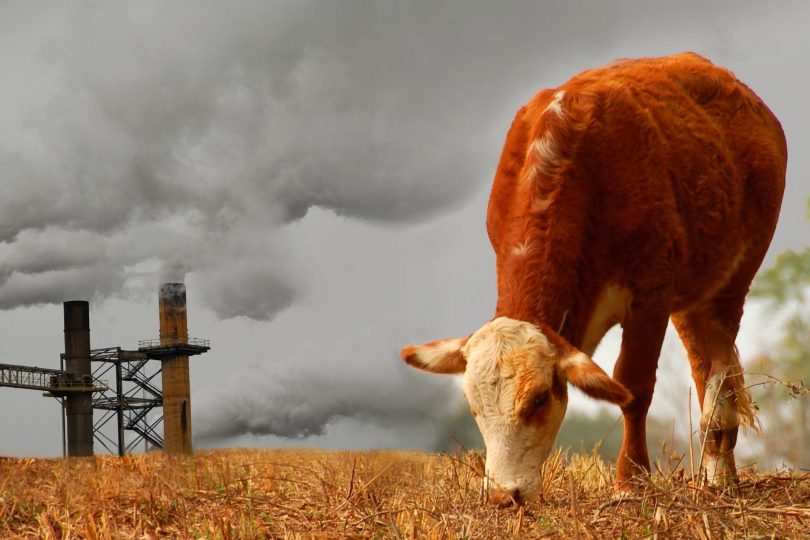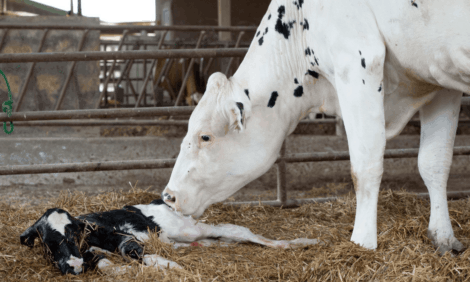



Oxford Scientists: Get the maths right on emissions or risk missing temperature target
The way that governments are setting targets for different greenhouse gas emissions could be “unfair, inefficient and dangerous”, researchers argue in a new paper. In the paper, published today in Environmental Research Letters, researchers from the LEAP (Livestock, Environment and People) project, based at the Oxford Martin School, say the commonly-used GWP100 method obscures how different emissions contribute to global temperature change. This could be putting at risk efforts to limit warming to a particular goal, they argue, because it doesn’t reliably account for the different impacts of long- and short-lived gases.
In the paper, published today in Environmental Research Letters, researchers from the LEAP (Livestock, Environment and People) project, based at the Oxford Martin School, say the commonly-used GWP100 method obscures how different emissions contribute to global temperature change. This could be putting at risk efforts to limit warming to a particular goal, they argue, because it doesn’t reliably account for the different impacts of long- and short-lived gases.
GWP100 describes different greenhouse gases – such as methane and nitrous oxide - as equal to a given amount of CO2: their ‘CO2 equivalence’. The paper argues that approaches like this, which treat all gases in the same way, will inevitably fail to capture important differences in how gases contribute to climate change depending on how long they remain in the atmosphere.
*
"This has important implications for how countries work out emissions targets for different sectors"
The different ‘lifespans’ of emissions are crucial to understanding their potential to warm the earth’s atmosphere. CO2 is an extremely long-lived gas, and so accumulates in the atmosphere for as long as emissions are maintained. This also means that even if CO2 emissions were to cease, the warming they caused would remain relatively fixed for centuries.
‘Short-lived’ climate pollutants such as methane, meanwhile, do not accumulate thanks to their relatively rapid natural removal from the atmosphere. So after causing an initial temperature rise, a sustained level of methane emissions does not cause significant continued warming – this dynamic cannot be captured by GWP100. At the same time, by being based on overall impacts over 100 years, well after most of a methane emission has broken down, GWP100 also significantly understates this initial warming impact of introducing a new methane emission.
For ruminant agriculture, for example, GWP100 undervalues the immediate temperature impacts of both increasing and decreasing livestock numbers, and overvalues the impact of numbers remaining stable. The authors recommend an alternative method, GWP*, which is able to capture the different temperature responses over any given time frame.
“This has important implications for how countries work out emissions targets for different sectors, which will be emitting different greenhouse gases,” said lead author Dr John Lynch. “With the Paris Agreement goal of limiting warming to keep temperature rises well below 2C, the pressure is on for countries to work out where to focus their emissions reductions.
“We can’t afford to get the maths wrong on this. GWP* gives a straightforward and reliable means of anticipating the impacts of different emissions scenarios on global temperatures.”
Co-author Dr Michelle Cain said: “Reducing net CO2 emissions to zero is crucial to preventing further temperature rises. But the current accounting significantly underestimates the impact of increasing methane emissions, which is what’s happening at present.
“It’s not a trade-off between the two - any policy decisions which increase methane from agriculture or industry would be extremely detrimental to achieving the Paris Agreement temperature goal.”
Summarising the implications of the work, Professor Raymond Pierrehumbert, Halley Professor of Physics and a co-author on the paper, said: “The moral judgement of whether climate protection actions should prioritize near term impacts vs longer term effects is not for science to decide; that is a matter for the messy business of deliberative democracy. However, in order to make sound moral judgements, one must have an accurate assessment of the consequences of various actions.
“The standard metrics of methane and other short lived greenhouse gases simply do not do the maths right; they get both the short term and long term impacts wrong by substantial amounts, and are not a sound basis for planning public policy.”
GWP* was featured in the Intergovernmental Panel on Climate Change (IPCC) special report on ‘Global Warming of 1.5 °C’, and will be assessed as part of its forthcoming 6th Assessment Report. Professor Myles Allen, an author on previous assessment reports, said: “Basing climate policies and emissions trading systems on a metric that doesn’t demonstrate the impact of different pollutants on global temperature presents a serious risk to the reputation of environmental policy, and risks undermining public confidence.
“A switch to GWP* would not only prevent this but would also be relatively easy, as it uses information that is already reported in the UNFCCC system.”


